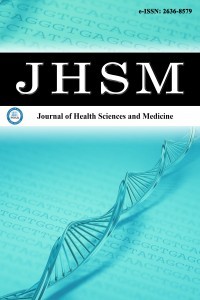1.
Rashid J, Batool S, Kim J, et al. An augmented artificial intelligenceapproach for chronic diseases prediction. Front Public Health.2022;10:559.
2.
Paglia L. WHO: healthy diet to prevent chronic diseases andcaries. Eur J Paediatr Dent. 2018;19(1):5-5.
3.
Rice L, Sara R. Updating the determinants of health model in theinformation age. Health Promot Int. 2019;34(6):1241-1249.
4.
Krause C, Sommerhalder K, Beer-Borst S, et al. Just a subtledifference? Findings from a systematic review on definitionsof nutrition literacy and food literacy. Health Promot Int.2018;33(3):378-389.
5.
Kiran T, Pinto AD. Swimming ‘upstream’to tackle the socialdeterminants of health. BMJ Qual Safety. 2016;25(3):138-140.
6.
World Health Organization (WHO). Closing the gap ina generation: health equity through action on the socialdeterminants of health: final report of the commission on socialdeterminants of health. Social Determinants of Health. 2013.Available from: https://www.who.int/publications/i/item/WHO-IER-CSDH-08.1
7.
Safety ACo, Care QiH. Health literacy: taking action to improvesafety and quality. Australian Commission on Safety and Qualityin Health Care. 2015.
8.
Baker DW. The meaning and the measure of health literacy. J GenIntern Med. 2006;21(8):878.
9.
Banatvala N, Akselrod S, Bovet P, et al. The WHO globalaction plan for the prevention and control of NCDs 2013-2030.noncommunicable diseases: Routledge. 2023:234-239.
10.
World Health Organization (WHO). Global status report onnoncommunicable disease. 2016. Available at: https://www.who.int/news-room/fact-sheets/detail/noncommunicable-diseases
11.
Franklin J, Holman C, Tam R, et al. Validation of the e-NutLit,an electronic tool to assess nutrition literacy. J Nutr Educ Behav.2020;52(6):607-614.
12.
Geissler C, Powers HJ. Human Nutrition. 13th ed. OxfordUniversity Press (2017).
13.
Marino M, Masella R, Bulzomi P, et al. Nutrition and humanhealth from a sex-gender perspective. Mol Aspects Med.2011;32(1):1-70.
14.
Yıldırım M, Kızıltan G, Ok MA. Beslenme okuryazarlığı nedir?BÜSBİD. 2021;6.
15.
Buja A, Grotto G, Montecchio L, et al. Association between healthliteracy and dietary intake of sugar, fat and salt: a systematicreview. Public Health Nutr. 2021;24(8):2085-2097.
16.
Duong TV, Pham KM, Do BN, et al. Digital healthy diet literacyand self-perceived eating behavior change during COVID-19pandemic among undergraduate nursing and medicalstudents: a rapid online survey. Int J Environ Res Public Health.2020;17(19):7185.
17.
Vu DN, Phan DT, Nguyen HC, et al. Impacts of digital healthydiet literacy and healthy eating behavior on fear of COVID-19,changes in mental health, and health-related quality of life amongfront-line health care workers. Nutrients. 2021;13(8):2656.
18.
Yılmaz SK, Eskici G. Sağlık okuryazarlığı ölçeği-kısa form vedijital sağlıklı diyet okuryazarlığı ölçeğinin Türkçe formunungeçerlik ve güvenirlik çalışması. İzmir Katip Çelebi Üniv SağlıkBilim Fak Derg. 2021;6(3):19-25.
19.
Demir-Tekkurşun G, Cicioğlu Hİ. Sağlıklı beslenmeye ilişkintutum ölçeği (SBİTÖ): geçerlik ve güvenirlik çalışması. GaziantepÜni Spor Bilim Derg. 2019;4(2):256-274.
20.
Karahan Yılmaz S, Eskici G. Validity and reliability study of theTurkish form of the health literacy scale-short form and digitalhealthy diet literacy scale. İzmir Katip Çelebi Üniv Sağlık Bilim FakDerg. 2021;6(3):19-25.
21.
WHO Expert Consultation. Appropriate body-mass index forAsian populations and its implications for policy and interventionstrategies.. Lancet. 2004;363(9403):157-163.
22.
Li T, Guan L, Wang X, et al. Relationship between dietary patternsand chronic diseases in rural population: management plays animportant role in the link. Front Nutr. 2022;9.
23.
Fanelli SM, Jonnalagadda SS, Pisegna JL, et al. Poorer diet qualityobserved among US adults with a greater number of clinicalchronic disease risk factors. J Prim Care Community Health.2020;11:2150132720945898.
24.
Taylor MK, Sullivan DK, Ellerbeck EF, et al. Nutrition literacypredicts adherence to healthy/unhealthy diet patterns in adultswith a nutrition-related chronic condition. Public Health Nutr.2019;22(12):2157-2169.
25.
Mahmudiono T, Nindya TS, Andrias DR, et al. Comparison ofmaternal nutrition literacy, dietary diversity, and food securityamong households with and without double burden of malnutritionin Surabaya, Indonesia. Malays J Nutr. 2018;24(3):359-370.
26.
Cesur D, Sümer D. Nutrition literacy status of adults residingin Sivas province and its relationship with quality of life: across-sectional study from Turkey. Innovative J Med Health Sci.2018;8(1):1-9.
27.
Yarmohammadi P, Morowatisharifabad MA, Rahaei Z,Khayyatzadeh SS, Madadizadeh F. Nutrition literacy and itsrelated demographic factors among workers of Taraz Steelcompany, Chaharmahal and Bakhtiari, Iran. Front Public Health.2022;10:911619.
28.
Darmon N, Drewnowski A. Does social class predict diet quality?Am J Clin Nutr. 2008;87(5):1107-1117.
29.
Evans KA, Stewart PA, Cook SR, et al. The relative costs of high-vs. low-energy-density foods and more vs. less healthful beveragesconsumed by children. J Hunger Environ Nutr. 2018;13(2):240-254.
30.
Rocka A, Jasielska F, Madras D, et al. The impact of digital screentime on dietary habits and physical activity in children andadolescents. Nutrients 2022;14(14):2985.
31.
Myszkowska-Ryciak J, Harton A, Lange E, et al. Reduced screentime is associated with healthy dietary behaviors but not bodyweight status among Polish adolescents. report from the wisenutrition-healthy generation project. Nutrients. 2020;12(5):1323.
32.
Trott M, Driscoll R, Irlado E, et al. Changes and correlates of screentime in adults and children during the COVID-19 pandemic:a systematic review and meta-analysis. EClinicalMedicine.2022;48:101452.
33.
Bowman SA. Peer reviewed: Television-viewing characteristics ofadults: Correlations to eating practices and overweight and healthstatus. Prev Chronic Dis. 2006;3(2):A38.

